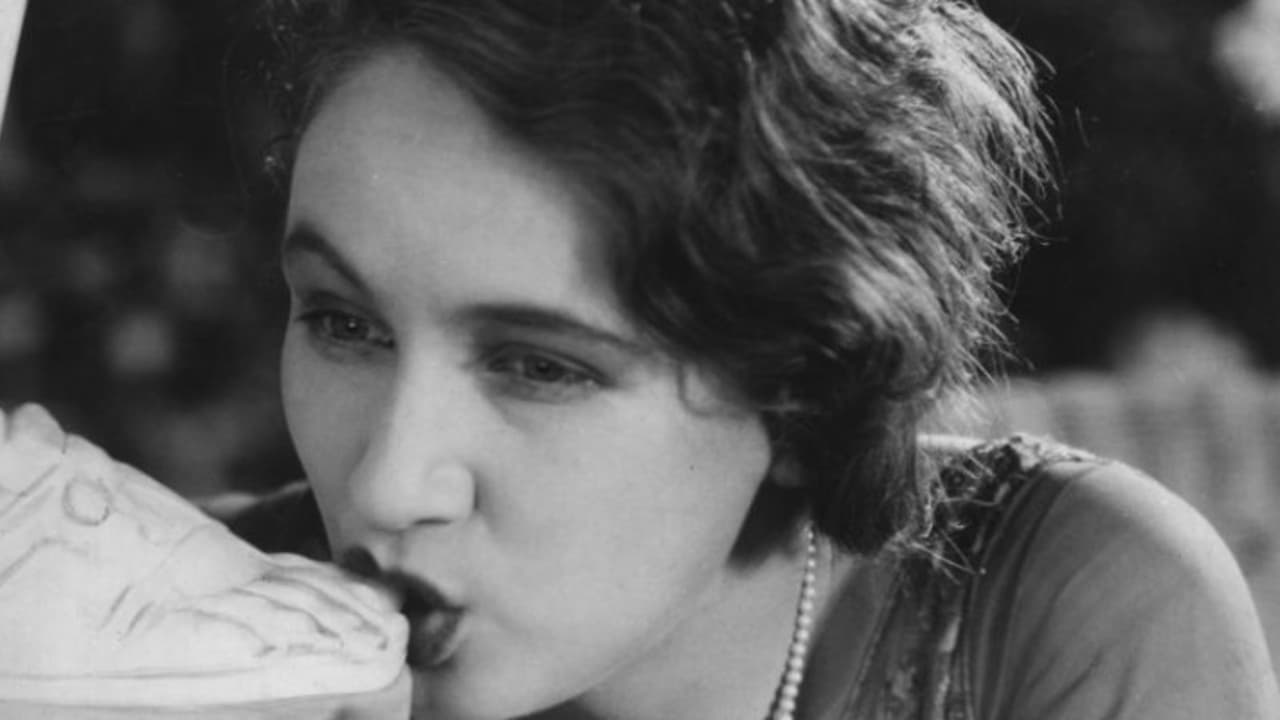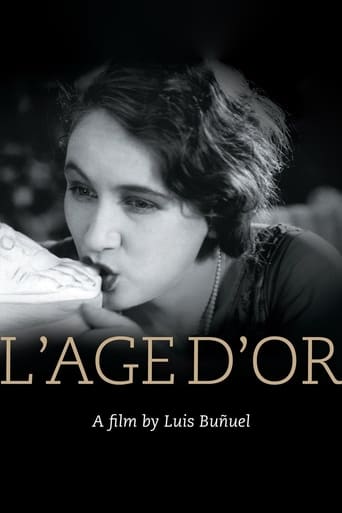

Strong and Moving!
... View MoreSave your money for something good and enjoyable
... View MoreBetter Late Then Never
... View MoreI have absolutely never seen anything like this movie before. You have to see this movie.
... View MoreI recognised the name of the director Luis Buñuel for his highly surreal nightmarish and memorable short film Un Chien Andalou which I saw in Film Studies, that and this film were listed in the book 1001 Movies You Must See Before You Die, so I was looking forward to see this his first feature film. Basically this French film is all about a loving couple, the Man (Gaston Modot) and the Young Girl (Lya Lys) and their many attempts to embrace and consummate their feelings, but all are interrupted and thwarted by various events and occurrences. These distractions often occur because of the families, the church and generally bourgeois society, and they find it very difficult to get away from these things and final sexual release and satisfaction, there is even a scene where all the Girl can do is suck the toe of a statue. Also starring Caridad De Laberdesque as a Chambermaid and Little Girl, Max Ernst as the Leader of men in cottage, Josep Llorens Artigas as Governor, Lionel Salem as Duke of Blangis, Germaine Noizet as Marquise and Duchange as Conductor. Alright, I will be completely honest and say that I didn't really understand anything going on, and I did get a dozy because of this, but I suppose I can see reasons why this film was banned for forty-nine years from what I can recall, and there are some humorous and erotic scenes, so it is I suppose not a bad satire. Good, as far as I remember!
... View MoreNormally I write the plot here, but I have no idea how...The film starts off explaining the physical and biological makeup of the scorpion, making me wonder why the film is called "The Golden Age". That soon goes away. Then we are treated to dirty men, perhaps gold miners... so what is all this talk of accordions and hippopotamuses? The film gets even more strange from there on out, with withering toilet paper, a violin and other such nonsense, somehow connecting the opening non-fight non sequitoriously to Imperial Rome and some French people... Then a man who sees women masturbating in posters...What the heck is a Majorcan? And what is up with the foot fetish scene? I like feet as much as the next guy -- maybe even more -- but I was more than a little put off by the drawn-out love between the woman and the statue. And then, "What joy in having killed our children!" Then a Majorcan returns... a flaming tree... a giraffe getting pushed out a window... and then what seems to be a reference to the Marquis de Sade's "120 Days of Sodom".Four times as long as "Un Chien Andalou", but strangely enough not as weird... this film may not make much or any sense, but it truly is a surrealist masterpiece.
... View MoreThis movie is something. Exactly what it is I don't know! But if I did, then I guess Bunuel and Dali wouldn't have accomplished what they set out to do.It's full of haunting images and haunting juxtapositions of classical music and image (the uses of Wagner's Prelude and Liebestod from Tristan and Isolde are especially striking!). The randomness of these images and scenes may put off some viewers, and it did take me a while to get into it, but they're likely to stick in viewers' minds for some time. In a way it reminds me of Bunuel's later The Discreet Charm of the Bourgeoisie, except this one has a couple's lovemaking constantly thwarted instead of dinner. While I didn't find this one to be quite as solid as that film, it certainly had its strengths.And I couldn't believe how despicable our hero was! Some of the things he does in this film are so wretched it's hilarious (such as punting a poor little doggy!). I also can't imagine that using the image of Christ in a scene based on the 120 Days of Sodom did much for the filmmakers' popularity at the time, but it is a striking way to end the picture. Last but not last, I just have to mention my favorite insane line from the movie: "What joy! What joy! To have murdered our children." This said by our heroine-of-sorts with a rapturous smile on her face.
... View MoreLuis Buñuel's companion piece to Un Chien Andalou had much the same effect its predecessor had on me: it bored me, it baffled me, it frustrated me, it disappointed me. It's another collection of insignificant, random episodes illuminated by rare flashes of genius. It eschews any narrative or meaning, which at least gives weight to its claim as one of the few actual surrealist movies ever made.But I've seen Buñuel's work from several periods in his life, and I admit I much prefer he works with a narrative, like in Belle de Jour or The Exterminating Angel. When anything goes in a narrative, when nothing has a purpose or limits, nothing is incredible about it, not cows in beds, or a woman sucking a statue's toes, or other bizarre imagery available in The Golden Age. On the other hand, in a reality-based movie the intrusion of the fantastic, the strange and the grotesque is much more noticeable and fascinating, and that's why I much prefer Buñuel has a story to work with.The Golden Age is a relic, a piece of film history, but I wouldn't call it a great movie. In terms of strangeness, I think Buñuel was surpassed by his contemporary Jean Cocteau, for instance. And in terms of shock, he has zero effect nowadays. That's the problem with shock: since it relies on transgressing boundaries and since boundaries are always changing in society, any work built on shock will quickly find itself dated. This movie doesn't hold up as well as later Buñuel movies.Let's give Luis Buñuel his due for having opened the doors for a new way of film-making, but let's not ignore the faults in this movie.
... View More